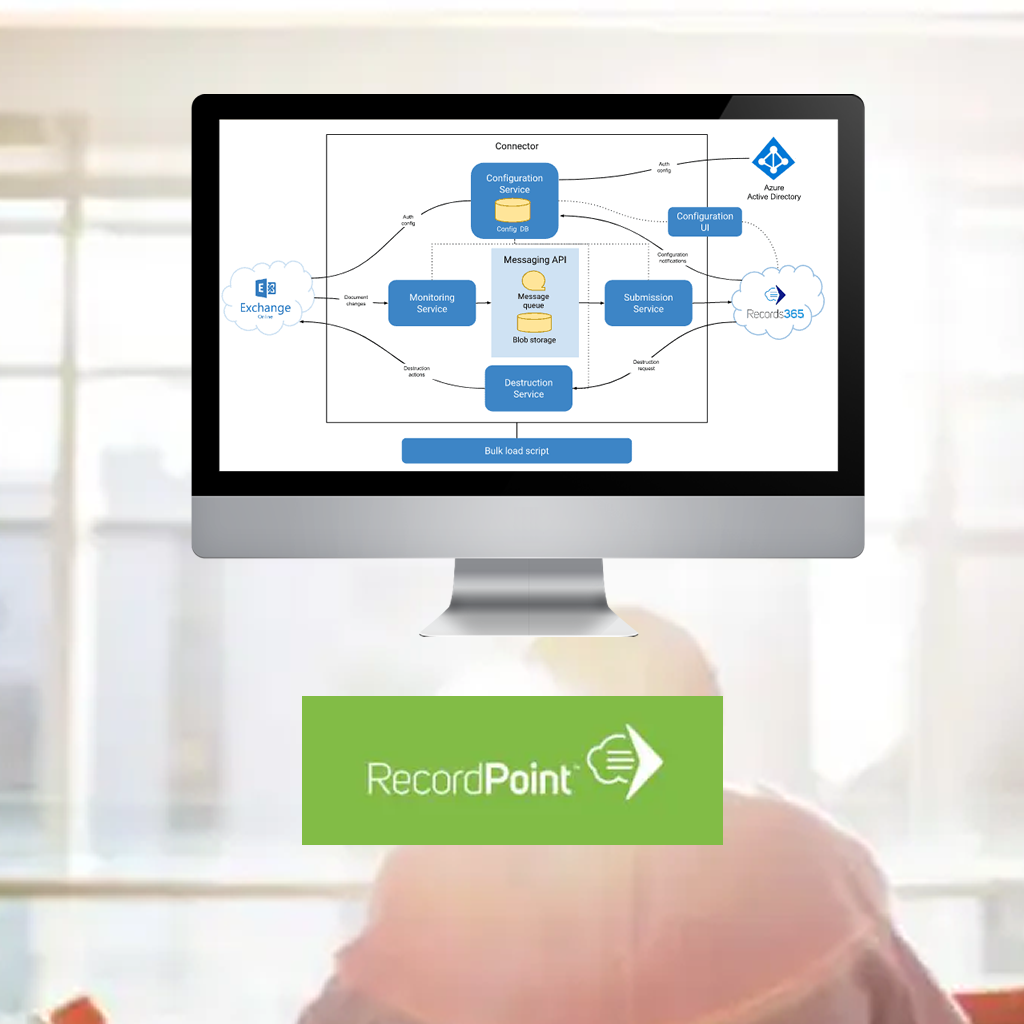Record Point: Exchange Online Connector
A sophisticated microservices-based connector that enables seamless integration between Exchange Online and Records365, processing millions of items daily with zero data loss and enterprise-grade scalability.

Background
RecordPoint is a global records management solution provider that gives businesses the ability to manage records from multiple services and platforms reducing the cost and complexity of records management.
In 2018, RecordPoint approached CoSource to build an Exchange Online Connector for their Records365 platform.
At a high level the connector had to perform the following functions:
- Monitor content in Exchange Online and submit new or changed emails to Records365
- Delete content from the content source on behalf of Records365 when requested
The Requirements
In developing the connector, CoSource had to meet a number of key requirements
The Architecture – RecordPoint Connector API
A Records365 Connector is a software component that interacts with a content source in order to locate and submit records to the Records365 records management platform, and which the platform can use to manage the content back in its source.
For this purpose, the Records365 platform hosts a Connector Framework, which each connector must integrate with in order to perform their function.
This framework is comprised of HTTP API endpoints that both internal and third-party developers can use to create connectors to any accessible content source, while imposing as few restrictions on how those connectors are designed and implemented as possible.
The Connector API
Allows submission of records, aggregations, audit information and binaries into Records365
Connector Notifications
Allows custom connectors to carry out actions on the content source when certain events take place in Records365
Connector Type Registration
Allows system integrators to register new custom connector types with Records365
Connector Configuration
Allows end-users to configure instances of custom connectors in Records365
The Solution – Microservices
The Connector was implemented as a set of microservices which ran on top of Azure Service Fabric to take advantage of its scalability and reliability
Configuration Microservice
Maintained the tenant's configuration and auth information in conjunction with Records365 which included a user interface component
Monitoring Microservice
Monitored the Exchange online content source for new messages and changes, then submitted them to the messaging API for processing
Submission Microservice
Digested and transmitted the data from Exchange online source to Records365
Destruction Microservice
In charge of executing the destruction orders from Records365 to Exchange online
Messaging API
Provided a central point through which all content flowed so it was maintained until it was safely stored in Record365 thus providing dead lettering functionality
Lastly, the connector was accompanied by a bulk load script which allowed for the rapid onboarding of new customers.
Technology Stack
Enterprise-grade Microsoft technologies for scalable records management
Azure Service Fabric
Microservices platform
.NET Core
Microservices framework
Microsoft Graph
Exchange Online integration
OAuth 2.0
Secure authentication
Final Thoughts
The connector was pivotal in maintaining Record Point's position of a global custodian of record management. The feedback from both Record Point and their customers was extremely positive, with the CEO personally thanking the CoSource team for the excellent work.
In Summary
Customer:
RecordPoint
Industry:
Document Management & Compliance
Business Problem:
RecordPoint needed to integrate into Exchange Online to provide record management
Solution:
Build an Exchange Online Connector
Outcome:
Allows submission of records, aggregations, audit information and binaries into Records365